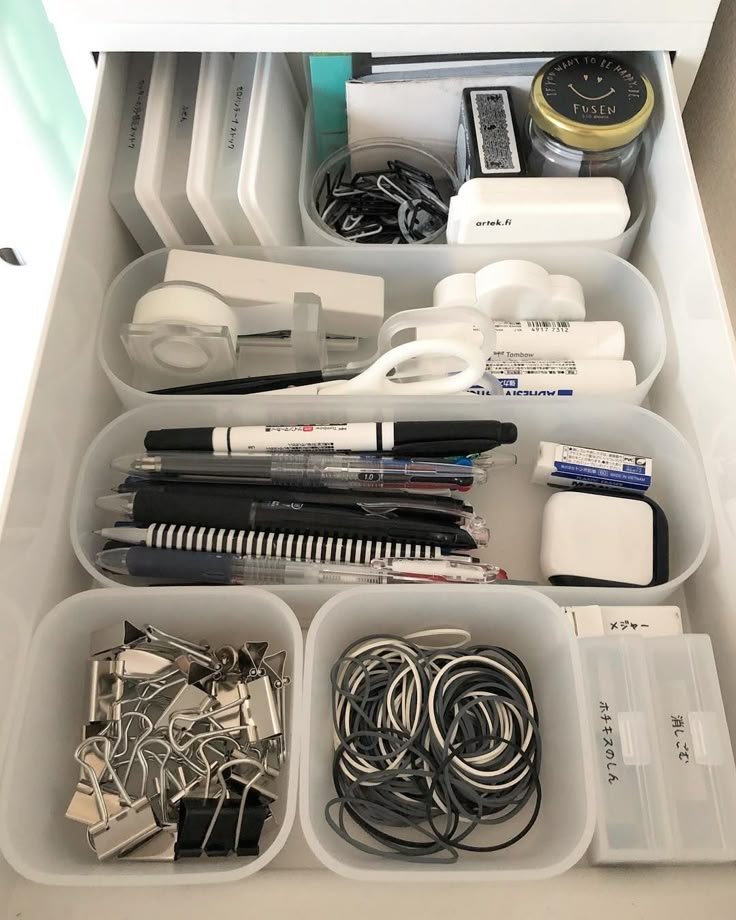If you’re anything like me, organizing usually turns into shopping. New bins. More shelves. Baskets. Drawers. And tons of other stuff that you swear will fix everything. But in about a week, the clutter and mess comes back. But what if the real fix isn’t buying more stuff—it’s learning to see your space differently? Letting go and reworking what you already have. Lets break it down in a way that feels light, doable and actually freeing by the end of the week.
Shift the Lens: Stop Trying to “Fix” It With More
Repeat after me:
You don’t need more baskets. You need better systems.
Before you open Amazon, open your eyes. Look at your space and ask:
- What actually gets used every day?
- What’s just taking up emotional or visual space?
- What’s here out of guilt, not usefulness?
Here’s something I do personally:
When I’m clearing my dresser, I start by throwing everything I use daily to one side of the bed. Things I use less often go to the other side. And anything I haven’t touched in forever? That goes on the floor. I keep going until the whole dresser top is clear. It’s fast, no overthinking.
Once you see your space with intention, the clutter starts to lose its grip.
Use What You Already Have (Seriously)
We’re not buying a single thing. Not even a cute little bin.
Here’s how to organize with what’s already lying around:
- Mugs → pens, hair ties, random screws
- Shoe boxes → drawer dividers
- Old trays or lids → keep similar things grouped
- Tote bags → temporary “catch-all” bin during sorting
- Gift boxes → stack them as storage cubbies
For me, I’ve used all kinds of random things:
An old glasses case for jewelry, a small basket for all my pins and paperclips, and even unused shoe storage for other things that needed a home. It’s not Pinterest-perfect, but it works. It gives everything a “spot” without having to buy new containers.
Your space can still feel elevated without the aesthetic. It just needs flow and purpose.
Rework, Don’t Redo
Instead of tearing everything apart, try the “shift and test” method:
- Clear just one surface or drawer.
- Only put back what you use, love, or need.
- Move the rest into a “hold box” (set a 7-day timer—if you don’t grab it, you probably don’t need it).
This works for other areas too.
In my kitchen, I recently went through stuff I hadn’t used in ages—spices I used once, things that expired, or ingredients I kept telling myself I might use again. And yeah, I know wasting food sucks, but sometimes clearing space gives you mental clarity you didn’t even know you needed.
It’s low-pressure, but high impact. The goal is breathing room, not aesthetic perfection.
Let Your Space Set Boundaries for You
Clutter tends to grow when space has no boundaries. So set soft limits:
- One drawer for cords. That’s it.
- A box for skincare—when it’s full, review before buying more.
- A “no-drop” zone: no tossing keys, mail, or wrappers on that table.
I have a drawer like that—my “once in a while” drawer. Stuff like thread, batteries, or backup chargers go in there. It’s not something I open daily, but I know exactly where those things live when I need them.
Also, I use the top of my closet for things I don’t need in my face every day. It’s not perfect back there—honestly, it’s a little chaotic—but I know where everything is. It’s like organized chaos. Looks neat on the outside, but I’ve got my own system that just makes sense for how I live.
When your space has rules, you don’t have to overthink every decision.
Takeaway Checklist
Here’s your quick reset for today (or if your reading this in the week, more realistically the weekend):
- Clear one visible surface (nightstand, desk, dresser)
- Reuse something as storage (a mug, a box, etc)
- Create one “zone” (like a coffee corner or entry station)
- Move unused items into a test bin
- Step back and notice how you feel (lighter?)
